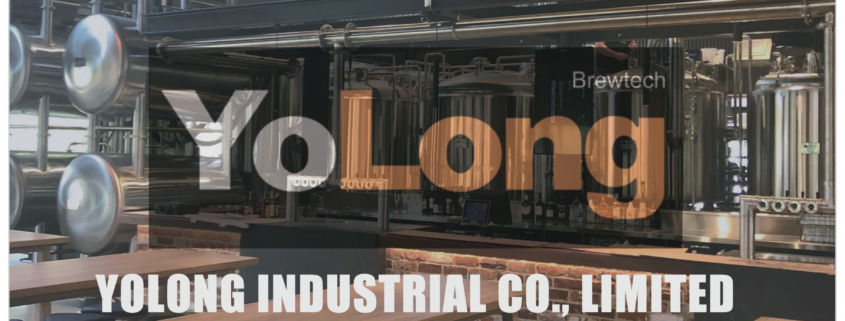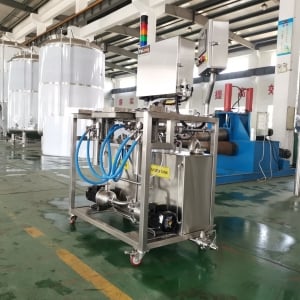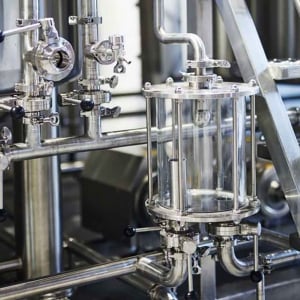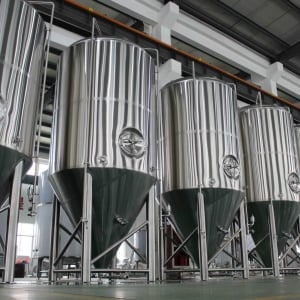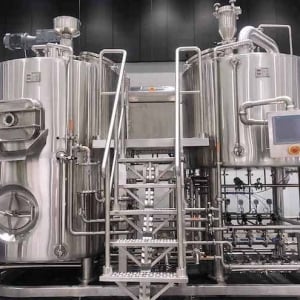3 BBL Brewhouse Brewing Systems
A 3 barrel (BBL) brewhouse is a common small-scale commercial brewing system for craft breweries. With a capacity of 93 gallons or 352 liters per batch, a 3 BBL system allows efficient microbrewery operations to meet local demand without large upfront equipment costs.
This article provides a comprehensive guide to 3 BBL brewhouses. We cover the brewing process, design considerations, equipment options, installation, operation, maintenance and how to select the right 3BBL system for your needs.
Brewing Equipment in a 3 BBL Brewhouse
The main pieces of equipment in a basic 3 BBL brewhouse are:
| Equipment | Description |
|---|---|
| Mash Tun | Stainless steel tank where the mashing process turns malt starches into fermentable sugars. |
| Lauter Tun | Separates sweet wort from spent grains through lautering. |
| Brew Kettle | Cooks wort and facilitates hop additions. |
| Whirlpool | Settles out hop debris and coagulated proteins. |
| Heat Exchanger | Cools hot wort quickly to pitching temperature. |
| Fermenters | Stainless steel vessels where yeast ferments sugars into alcohol. |
| Brite Tanks | Beer conditioning and carbonation before serving. |
Additional equipment like milling, filtering and cleaning systems complete an operational unit. Customization options are also available.
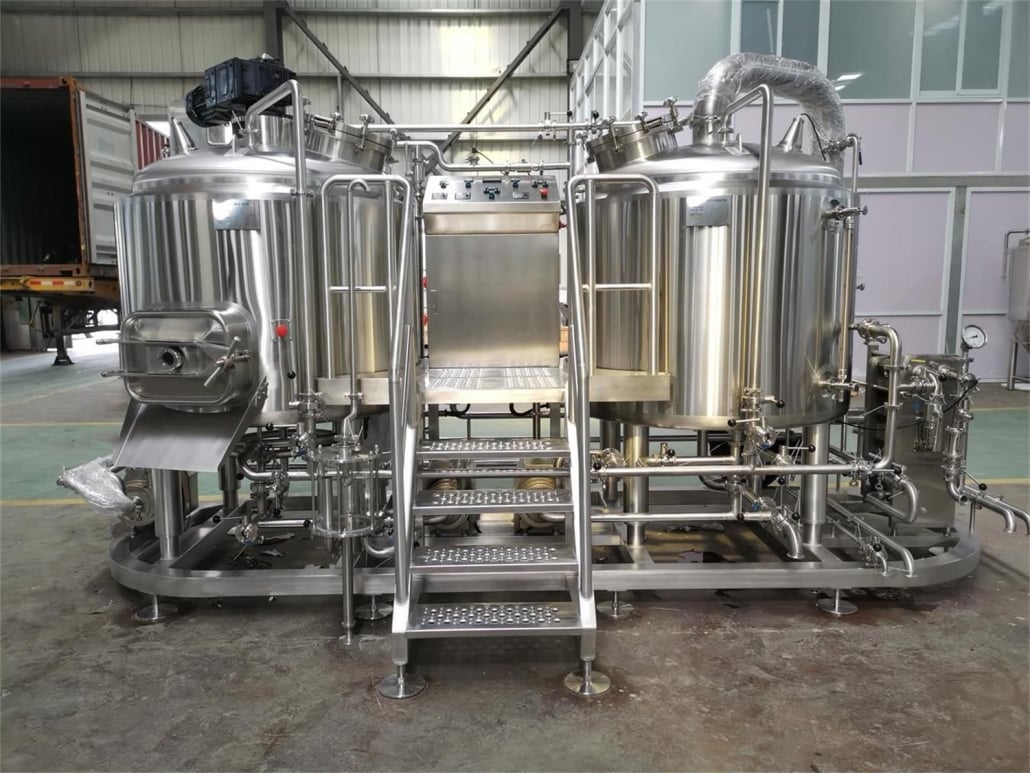
Brewing Process in a 3 BBL System
The typical brewing process includes:
Milling – Malt is cracked open to make starch and sugars accessible in the mash. Operated in batches or with a continuous mill.
Mashing – Milled malt is mixed with hot water in the mash tun to convert starches to fermentable sugars. Usually 60 minutes at 149-156°F.
Lautering – The mash is transferred to the lauter tun where sweet wort is separated from spent grains. Takes around 90 minutes.
Boiling – The wort is boiled in the brewkettle and hops are added at different times to impart flavor, aroma and bitterness. Typically a 90 minute boil.
Whirlpooling – The hot wort is circulated to create a whirlpool effect that settles hops and coagulants. Takes about 15 minutes.
Cooling – The clear wort passes through a heat exchanger to quickly cool it to pitching temperature, around 60-70°F.
Fermenting – Yeast is added to fermenters to convert sugars into alcohol and CO2 over 4-7 days.
Conditioning – Beer is cold crashed, filtered and carbonated in brite tanks before packaging.
Packaging – Final beer may be bottled, canned or kegged before shipping.
3 BBL Brewhouse Design Considerations
Key design factors in a 3 barrel brew system include:
| Parameter | Details | Customization |
|---|---|---|
| Size | 10-15 bbls fermentation capacity recommended for a 3 bbl brewhouse batch size | Scale system size appropriately to production goals |
| Layout | Compact, linear design or split level installation | Flexible configurations to suit space constraints |
| Height | 18-24 ft ceilings to fit equipment | Accommodate mezzanines, platforms, pit installations |
| Flooring | Reinforced to handle heavy loads | Trench drains, moisture-proof epoxy floors |
| Power | 220-480V, with 150-400 amps service required | Electric reqs vary by equipment choice and automation level |
| Utilities | Steam, glycol & CO2 systems; ventillation; chilled & hot liquor lines | Centralize utility connections for flexible operations |
| Production | Aim for 3-4 turns per week with good fermentation rotation | Streamline workflow to maximize system utilization |
| Ergonomics | Easy to operate and move between vessels | Automate lifting, pumping & transfers to reduce labor |
| Customization | Modify vessels, add whirlpools, multiple kettles | Component choices affect flexibility & expansion options |
Fine tune brewhouse design based on your brewery facility constraints, production targets, beer styles and future growth plans.
Buying a New 3 BBL Brewing System
When investing in a new 3 barrel brewhouse, buyers evaluate options on:
| Consideration | Details |
|---|---|
| Price Range | $100,000 to $250,000 |
| Lead Time | 16-20 weeks from order to delivery |
| Output | Up to 750 bbls annual production capacity |
| Vessel Fabrication | Stainless steel is standard. Consider material grade, thickness, finishes and level of polish. |
| Equipment Choices | Flexibility of mash tun, lauter tun, number of brew kettles, whirlpool design and cooling systems. |
| Level of Automation | Manual, semi-auto or fully automated systems. Labor saving vs. equipment cost tradeoffs. |
| Brand Reputation | Established manufacturers may charge a premium but offer reliable engineering and service. |
| Sourcing | Buy complete turnkey systems vs sourcing vessels & components separately. |
| Customization | Tailor vessels & modifications to your needs vs off-the-shelf systems. |
| Warranties | Compare workmanship, replacement part and service response terms. |
Understand options across parameters to invest wisely for a brewhouse that meets current production with room for growth. Get quotes from multiple vendors.
Buying a Used 3 BBL System
Used and reconditioned 3 BBL brew systems provide ways to get into small scale commercial brewing on a budget. Considerations when buying second hand equipment:
Inventory – Check online databases regularly for availability as demand is high. Be ready to act quickly if finding a good listing.
Components – Carefully evaluate vessel conditions and what ancillary equipment is included or still needed. Factor rebuild, repair and replacement costs.
Cleaning & Refurbishment – Have vessels thoroughly inspected and cleaned professionally before installing in your brewery.
Pricing – Condition and completeness significantly impact price. Expect to pay 40-60% of new cost depending on factors above. Negotiate discounts for major repairs needed.
Transportation & Installation – Account for dismantling existing setups, trucking and reassembly costs before purchase. Rent rigging equipment as needed.
Warranties – Transferable remaining warranties may add value. Otherwise coverage will be limited to repair workmanship only.
Validation – Test system thoroughly initially and adjust processes if needed to match manufacturer specifications on output.
Though buying used equipment takes more effort, it can significantly reduce initial capital investment in a functional 3 BBL system.
Popular Manufacturers of 3 BBL Brewhouses
Reputable equipment manufacturers for small brew systems include:
| Brand | Description |
|---|---|
| [Specific Brand Names] | Leading US manufacturer of brewing equipment for over 25 years. Complete 3 bbl brewhouse systems and individual vessels available. |
| [Specific Brand Names] | German engineered, American made brewhouse solutions. Efficient quality equipment, boils and whirlpools. |
| [Specific Brand Names] | Italian stainless steel process systems for the industrial food and beverage industry. |
| [Specific Brand Names] | Custom fabrication from WA state. Lower cost mash tuns, fermenters and brite tanks. |
Many vendors also offer installation services, shipping coordination, operator training and after-sales support nationwide.
3BBL Brewhouse Installation Best Practices
Proper installation of a new or used 3 BBL brewing system enables efficient operations and maximizes equipment longevity:
- Flooring – Reinforce concrete flooring in the brewhouse area to bear heavy loads. Slope gently towards trench drains.
- Layout – Ensure adequate space around vessels for comfortable operator movement and access between tanks. Mark locations clearly.
- Assembly – Rigging equipment is needed to safely place heavy vessels. Bolt together modules securely according to manufacturer instructions.
- Plumbing – Connect plumbing internally between vessels and externally to utilities – steam, glycol, CO2 lines, chilled water etc. Pressure test.
- Electrical – Wire up control panels, motors, sensors and switches to power sources. Verify direction of rotation on pumps.
- Commissioning – Clean and passivate vessels. Calibrate valves and instrumentation, configure control settings.Document parameters.
- Safety – Establish emergency stop buttons, alarm systems, warning signs and proper protective gear for operators.
Avoid shortcuts and ensure professional installation for safe ongoing brewhouse functionality. Budget 15-20% of system costs for these services.
Operating a 3 BBL Brewing System
Day-to-day operation of a 3BBL brewhouse to maximize quality and consistency requires:
- Workflow – Schedule raw material deliveries, production calendar and fermentation durations to smooth workflows. Line up packaging days.
- Malt Handling – Measure, mill and mix malt carefully per recipe. Meet sizing specifications for optimal extraction.
- Mashing – Hit target temperature rests, calibrate sensors periodically. Recirculate thoroughly, vorlauf until clear runoff.
- Boiling – Use precise timing and sequence for bittering hop additions. Measure gravities. Meet turnaround times.
- Cooling and Pitching – Bring wort to correct temperature before aerating and yeast pitching. Record gravities.
- Fermentation – Maintain steady temperatures and pitching rates for healthy ferments. Monitor density daily.
- Sanitation – Follow thorough cleaning and sanitizing procedures between batches in all vessels and transfer lines.
- Quality Checks – Verify OG, FG, ABV, IBUs, color etc. match style guidelines. Taste and adjust recipes.
Consistent operation hitting all points above result in quality brews every batch. Adjust protocols over initial pilot runs.
Maintaining a 3 BBL Brewhouse
Preventative maintenance is key for 3 BBL brewhouse reliability and longevity:
Daily – Post batch clean up procedures, verify valves and gauges functioning
Weekly – Oil pumps / motors if needed, calibrate sensors
Monthly – Inspect fittings, clamps, gaskets for leaks/wear, check belt tension
Quarterly – Descale tanks & cooling jackets, clean draft lines, lubricate chains, inspect electrical boxes
Annually – Pressure test glycol/CO2 lines, rebuild valves, replace gaskets/seals
As Needed – Tune PID controllers, fix insulation damage, troubleshoot control software
Document maintenance procedures done for each vessel & accessory. Schedule specialist contractors for annual servicing. Identify replacement part suppliers upfront.
Investing in preventive maintenance avoids unexpected downtime during peak brewing periods.
Choosing the Right Brewhouse Supplier
Key factors in selecting a quality 3 BBL brewhouse partner:
Industry Experience – Well established vendors with proven track records consistently delivering high performance brewing equipment.
Offerings – Range of standard and customizable brewhouse configurations and volumes for current and future needs.
Manufacturing – Use strict standards for fabricating vessels and accessories from quality material with precision welding, finishing and polish.
Staff Expertise – Employ specialists for brewhouse design engineering, equipment manufacturing, project management, field services and customer support.
References – Can provide referrals to existing customers of comparable size 3BBL installations.
Services – Handle permitting, shipping coordination, equipment rigging and full installation support.
Terms – Offer payment plans, warranties on parts and labor, support with financing options.
Locality – Have a physical presence and service technicians located nearby for rapid response.
Evaluate brewhouse companies based on criteria above that match your risk appetite, quality needs and service expectations.
Comparing New vs Used 3 BBL Brew Systems
Weigh these key pros and cons when deciding between new or pre-owned equipment:
| Consideration | New 3 BBL System | Used 3 BBL System |
|---|---|---|
| Cost | $100,000 – $250,000 | $40,000 – $150,000 |
| Lead Times | 16 – 20 weeks | Ready for immediate shipping |
| Life Span | 15 – 20+ years | 5 – 15 years remaining |
| Performance | Maximized mash efficiency and yield | May need tuning and repair |
| Reliability | Little risk of downtime | Higher risk of issues |
| Maintenance | Under warranty for 1-2 years | No warranty coverage |
| Resale Value | Holds 50-60% of purchase value | Depends significantly on condition |
| Customization | Tailor vessels and operations | Limited flexibility |
| Safety | Designed to all current standards | Ensure updated to specifications |
| Efficiency | Latest heating/cooling/automation features | Retrofits may be needed |
| Brands | Major equipment manufacturers | Mix of vessels potentially |
Weigh cost savings vs. risks carefully based on your brewing goals. Blend of new and used equipment is also an option.
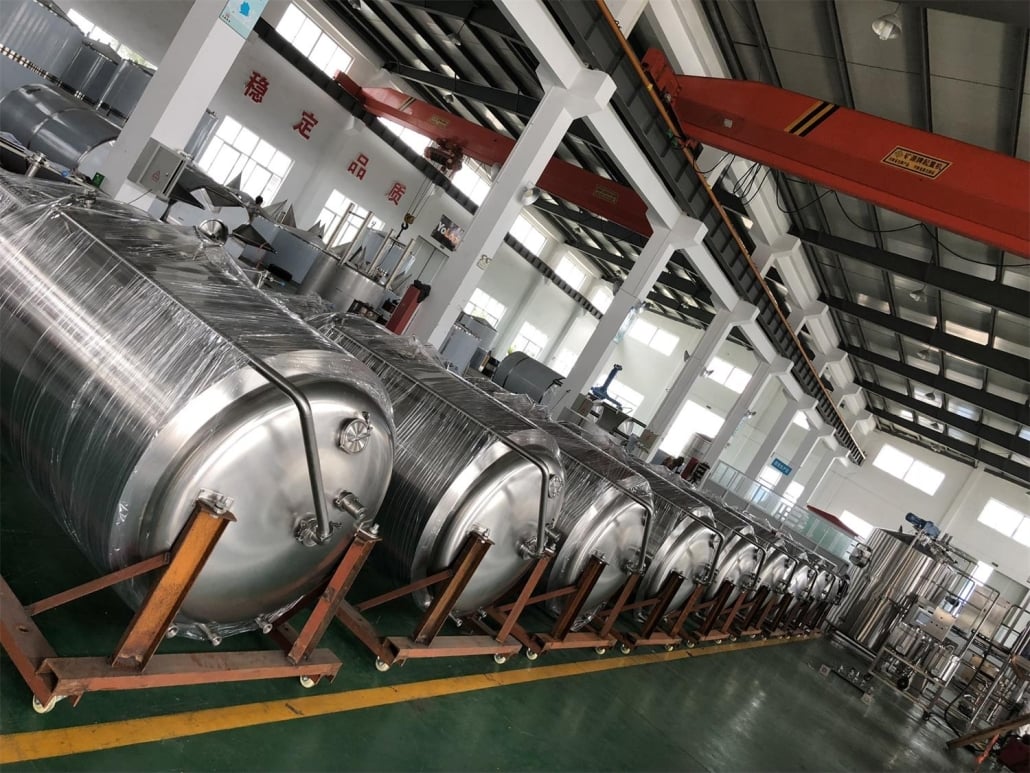
FAQ
Q: What size is a 3 BBL brewhouse system?
A: A 3 barrel brewhouse has a capacity of producing 3 barrels or 93 US gallons or 352 liters per batch. The fermentation capacity is larger, typically around 10-15 barrels.
Q: How much beer can a 3 BBL system produce annually?
A: With good fermentation space and workflow, a 3 BBL brewhouse could produce 750-1000 barrels annually operating at 3-4 turns per week. This meets demand for a typical small taproom or distribution at local venues.
Q: What is the cost of a 3BBL turnkey brewhouse system?
A: A new 3BBL turnkey brewhouse system with 3 vessels and accessories costs between $100,000 to $250,000 delivered and installed. Buying used vessels and components separately can reduce costs to $40,000 – $100,000.
Q: What electrical power supply is needed for a 3BBL system?
A: A 3 BBL brewhouse needs 220-480V, 3 Phase electrical service. Depending on the level of automation and accessories chosen, amperage capacity required is 150-400 amps.
Q: Can I expand a 3 bbl brewhouse in the future?
A: When buying a new 3BBL system, consider modular designs that allow easy expansions. For example, add additional fermenters and brite tanks as needed later. Limitations exist with kettle sizing and cooling systems.
Q: Is a 3 bbl system profitable for a microbrewery?
A: Carefully researching your local market demand, competition, operating costs and pricing can determine if a 3 bbl nano brewery business can be profitable long term. Advantages of small systems are lower investment and overhead costs compared to larger 15-30 bbl brewhouses. Effective taproom sales are key.
Q: What raw materials are needed to brew on a 3 bbl system?
A: Key raw materials needed are malt, hops and yeast. Have bulk storage capabilities and good suppliers in place for base malt, specialty grains, pellet hops and liquid yeast before commencing 3 bbl brewhouse operations.

